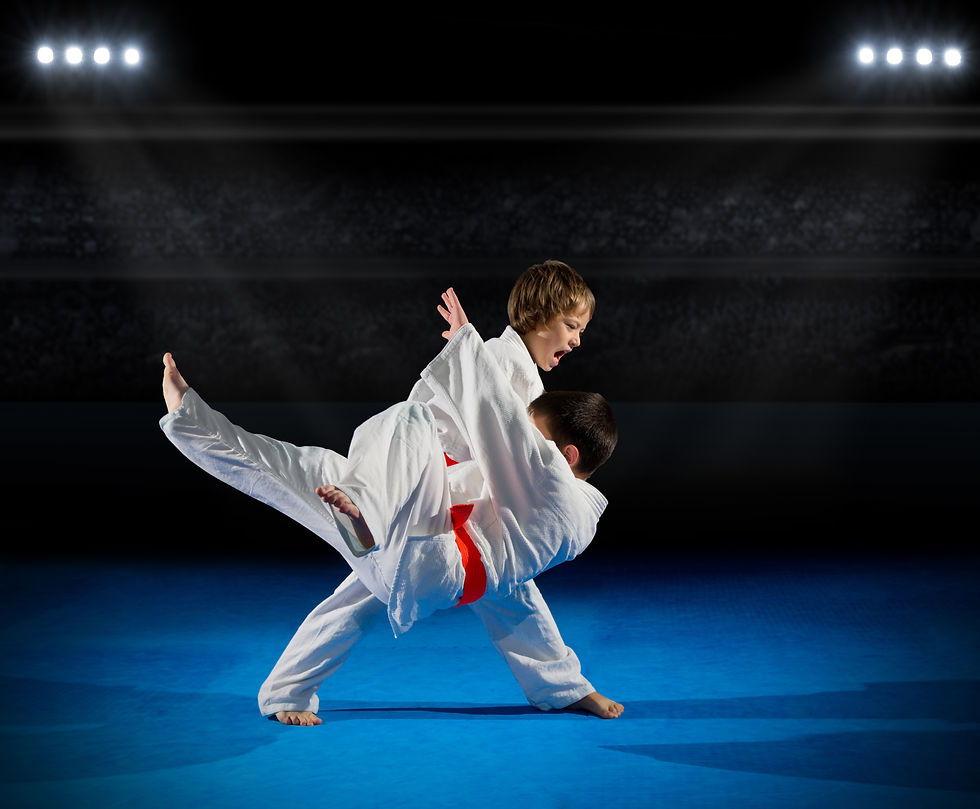What is Aikido?
- Kay Lim

- Jun 25, 2019
- 3 min read

When did Aikido start?
Martial arts have always been a part of people’s culture. The earliest evidence of the martial arts dates back to Ancient Egypt, about 3400 BC, a fresco depicting military training.
The historical origins of Japanese martial arts came from warrior traditions of the samurai. Back in the days, the non-warrior class was not allowed to use any weapons, which built a path for the development of unarmed combat. Aikido, a traditional martial art, was developed early in the last century.
Keep on reading to get to know more about the founder, influences from which this martial art had the most impact and the origins of the techniques.
The Founder: Morihei Ueshiba (Ōsensei)
The founder, Morihei Ueshiba was born in the Japanese coastal town modern-day Tanabe on December 14, 1883, where he spent his childhood. From a young age, he has trained and studied many martial arts, including mastering the spear, staff techniques and swordsmanship.
He has also studied various styles of jujutsu, particularly the Yagyu and Daito styles. Later in his life, during the Russo-Japanese War, he served in the Japanese Army.
After the military, Ōsensei moved to Hokkaidō, where he had the honor to meet and study with the founder of Daitō-ryū Aikijūjutsu, Takeda Sōkaku.
Ueshiba became his most famous student to this day.
Eventually, Ōsensei joined the Ōmoto-kyō group. He became an active member of the religion and a follower of charismatic Onisaburo Deguchi, one of the spiritual leaders who became Ueshiba’s mentor.
Aikido has a strong influence from Ōmoto-kyō, forming the ideological basis of the martial art. Many of ŌSenseis wisdom was interpreted with keeping the Ōmoto-kyō teachings firmly in mind.
Ōmoto-kyō Influence on Aikido
Ōmoto-kyō is a religion and a neo-Shinto movement that started in Ayabe. It puts a great emphasis on attainment of utopia, increasing love and compassion and teaching world harmony and peace. Ueshiba found this religion in 1919 when he found out that his father was ill.
After his father’s death, he decided to become a full-time student of Ōmoto-kyō. He was also teaching Daitō-ryū Aiki-jūjutsu, and with encouragement from Deguchi, he created his own style, called "Ueshiba-ryū". Ueshiba started to view his martial art training as a means to perfect self and spiritual training.
Unfortunately, back in those days, Japan has seen many violent conflicts, which encouraged Ueshiba to found Aikido. It was during the Second World War, specifically the Pacific war, that Ueshiba had a spiritual experience, known as the vision of “Great Spirit of Peace”.
This was a new understanding of a Way of the Warrior that it is not for killing and destruction, but rather a means for peace and the power of love.
Aikido demonstrates this philosophy in its emphasis on mastering martial arts so that one may receive an attack and harmlessly redirect it as opposed to conquering others.
Origins of Aikido Techniques
Aikido began to diverge from Daitō-ryū Aiki-jūjutsu in the 1920s, which was the core martial art that the technical curriculum is developed from.
Aikido itself originated from a combination of soft and hard style, Aikijujutsu, emphasizing an early neutralisation of an attack.
In the early years (1920 to mid-1930) of Ueshiba’s teaching, his students document the term Daitō-ryū, corresponding to the origins of Aikido. However, Daitō-ryū is particularly characterized by the use of Atemi, thus over the years, Aikido has drifted further, concentrating more on defensive techniques.
The techniques employed in Aikido, while not aimed to harm the attacker are very effective at redirecting the force. It says, the harder they come, the harder they fall.
Nevertheless, much of Aikido’s technical structure derives from Kenjutsu, an art of swordsmanship.
Even though, Aikido is strictly unarmed technique, training with weapons enables to practice a sense of timing of a defensive technique. It helps to neutralize an attack's effectiveness using the force of the attacker's movement against him.
Modern-day Aikido
Morihei Ueshiba passed away in 1969 at the age of 85. Over his lifetime, he has trained a large number of students, who become famous teachers with their own unique sense of Aikido.
Roughly four different generations of Ōsensei’s students are distinguished, based on the time they were training. That includes pre-war (1921 - 1935), Second World War (1936 - 1945), post-war (1946 - 1955) and Ueshiba’s final years (1956 - 1969).
In 1951 it has spread internationally with the first introduction of Aikido in France to judo students, by Minoru Mochizuki. Now there are many dojos throughout the world and Aikido teachings live for the benefit for coming generations.





Comments